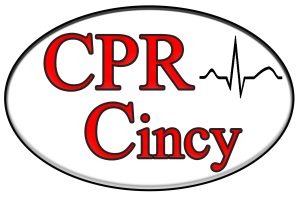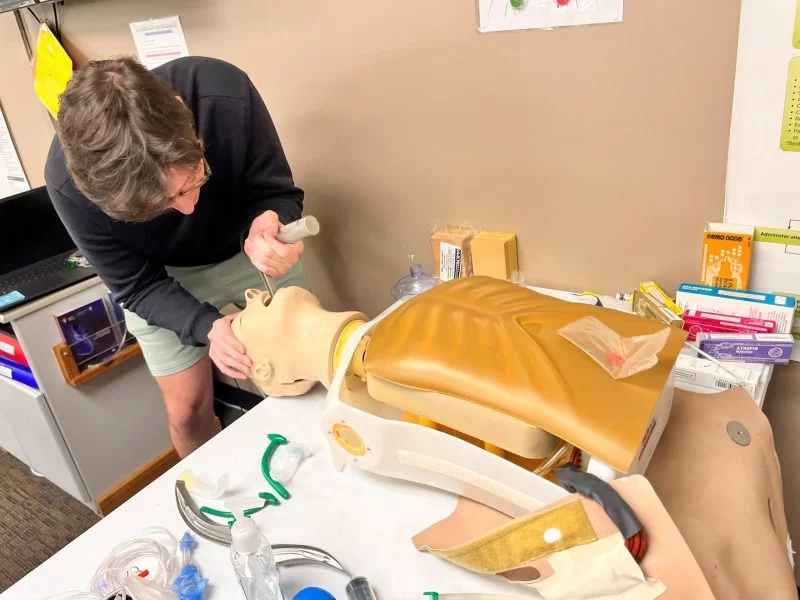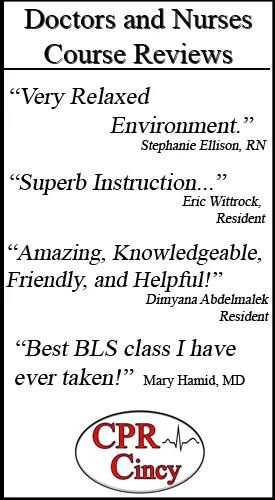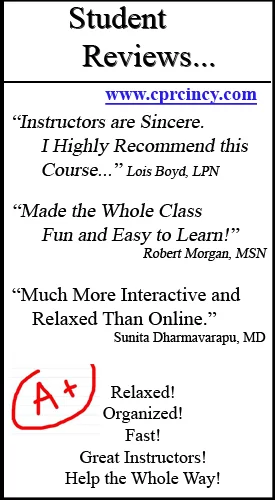CPR certification is a crucial requirement for professionals working in healthcare and emergency services, providing them with the skills and knowledge necessary to respond to life-threatening situations. The American Heart Association (AHA) offers various CPR certification levels to cater to the diverse needs of healthcare providers and non-medical responders. This guide will break down the different certification levels and help professionals determine which one is most suited to their roles and responsibilities. Choosing the appropriate certification ensures that individuals are equipped with the right skills to handle emergencies, whether in a hospital, clinic, or community setting.
Why AHA CPR Certification is Important for Professionals
AHA certification is globally recognized as the gold standard in life-saving training. Having an AHA certification assures that healthcare professionals and emergency responders are well-trained in cardiopulmonary resuscitation (CPR) and emergency cardiovascular care (ECC), which can significantly improve survival rates during emergencies. For professionals, particularly those working in high-pressure environments like hospitals, emergency response units, and clinics, maintaining a current certification is essential for compliance with industry standards and providing the highest quality of care.
When someone’s heart stops beating, every second counts. Immediate CPR can double or triple the chance of survival from an out-of-hospital cardiac arrest. Understanding the different AHA CPR certification levels helps you choose the right training to save lives confidently.
What Are the Different AHA CPR Certification Levels?
The American Heart Association offers four primary CPR certification levels. Each level is designed for different audiences and skill requirements.
Heartsaver CPR AED: Entry-Level Protection
The HeartSaver course covers adult, child, and infant CPR, choking relief, and AED usage. This certification serves the general public, teachers, coaches, and workplace safety personnel. It provides essential skills for responding to cardiac emergencies without requiring a medical background.
BLS (Basic Life Support): Healthcare Provider Standard
AHA’s BLS certification, designed for health care professionals, is typically valid for two years. Healthcare workers, including nurses, doctors, EMTs, and medical students, need this certification. BLS training goes deeper than Heartsaver by covering team-based resuscitation protocols and advanced airway management.
ACLS (Advanced Cardiovascular Life Support): Critical Care Excellence
AHA’s ACLS certification, intended for advanced medical personnel, is generally valid for two years. Medical professionals working in emergency departments, intensive care units, and cardiac care require this advanced certification. ACLS builds on BLS by adding pharmacology, advanced airway techniques, and cardiac rhythm interpretation.
PALS (Pediatric Advanced Life Support): Specialized Pediatric Care
PALS certification equips healthcare providers with specialized skills for treating infants and children in critical situations. Pediatric emergency teams, pediatricians, and pediatric nurses benefit from this focused training on child-specific resuscitation protocols.
Understanding First Aid Level 1, 2, and 3
Many people confuse CPR certification with First Aid levels. Here’s what distinguishes them:
First Aid Level 1: Foundation Skills
First Aid Level 1 training serves as an introduction to essential first aid techniques and procedures. This one-to-two-day course teaches basic wound care, bleeding control, and stabilization techniques. Office workers and individuals in low-risk environments typically start here.
First Aid Level 2: Intermediate Response
Building upon the foundational skills acquired in Level 1 training, First Aid Level 2 delves deeper into the management of medical emergencies and traumatic injuries. The three-to-five-day training covers oxygen therapy, spinal injury management, and fracture immobilization. Manufacturing facilities, construction sites, and outdoor recreation settings require this level.
First Aid Level 3: Advanced Emergency Care
First Aid Level 3 represents the highest level of first aid training available to laypersons, encompassing a wide range of advanced medical interventions and protocols. This comprehensive five-to-seven-day course includes AED operation, advanced airway management, and medication administration. Healthcare facilities, emergency response teams, and remote location workers need this expertise.
The Four Essential Stages of CPR
CPR follows a systematic approach. In its full, standard form, cardiopulmonary resuscitation (CPR) comprises 3 steps: chest compressions, airway, and breathing (CAB). Modern CPR emphasizes this CAB sequence:
Stage 1: Check for Response and Call for Help
Before starting CPR, you must assess the situation. Check if the person responds to verbal commands or gentle shaking. Immediately call 911 or instruct someone nearby to call.
Stage 2: Chest Compressions
Repeatedly push on the person’s chest (chest compressions) 100 to 120 times per minute. Push down 2 inches each time (about the height or short side of a credit card). Maintaining proper compression depth and rate keeps blood flowing to vital organs.
Stage 3: Open the Airway
After 30 compressions, tilt the person’s head back and lift their chin. This maneuver opens the airway by moving the tongue away from the throat.
Stage 4: Rescue Breaths
Give two breaths for every 30 compressions (about 20 seconds or so). Each breath should make the chest visibly rise. Continue the 30:2 cycle until help arrives or the person shows signs of recovery.
Which AHA CPR Certification Level Is Best?
The best certification depends on your role and responsibilities:
Choose Heartsaver if you:
- Work in non-healthcare settings
- Need workplace safety certification
- Want to protect family members
- Coach youth sports or teach
Choose BLS if you:
- Work in healthcare
- Hold a medical license
- Provide patient care
- Need professional certification
Choose ACLS if you:
- Work in critical care units
- Treat cardiac emergencies
- Lead resuscitation teams
- Practice emergency medicine
Choose PALS if you:
- Work in pediatric settings
- Treat children regularly
- Staff emergency departments
- Practice pediatric medicine
The Life-Saving Impact of CPR Certification
Recent data demonstrates CPR’s remarkable effectiveness. Patients whose arrests were witnessed by a bystander were over three times more likely to survive than those whose arrests were unwitnessed. People who received CPR within the first two minutes of an out-of-hospital cardiac arrest had the highest chance for survival and for retaining brain function.
These statistics reveal why proper AHA CPR certification matters. Training gives you confidence and competence to act when someone needs you most. Every community benefits from having more certified responders ready to help.
Take Action: Get Your AHA CPR Certification Today
Don’t wait for an emergency to wish you had training. Unfortunately, only about 40% of people who experience an OHCA get the immediate help that they need before professional help arrives. You can change this statistic by getting certified.
Ready to learn lifesaving skills? CPR Cincinnati is an American Heart Association training site that offers initial certifications and renewal in BLS for Healthcare Providers, ACLS, PALS, and CPR and First Aid courses. All classes are stress-free and hands-on.
Whether you need CPR certification in Cincinnati for work requirements or want to protect your loved ones, now is the perfect time to start. Looking for BLS certification in Cincinnati? Our expert instructors provide comprehensive training that prepares you for real-world emergencies.
Contact CPR Cincinnati today to schedule your AHA CPR certification course. Join thousands of certified lifesavers making their communities safer, one heartbeat at a time.
Frequently Asked Questions About AHA CPR Certification Levels
How long are AHA CPR certifications valid?
All AHA CPR certifications remain valid for two years from the completion date. After two years, you need to take a renewal course to maintain your certification. Renewal courses typically take less time than initial certification and focus on skill refreshers and guideline updates.
Can I take multiple AHA CPR certification levels at once?
Yes, but some certifications have prerequisites. BLS does not require prior certification and serves as the foundation for healthcare providers. ACLS requires current BLS certification before enrollment. You can take Heartsaver and BLS separately or choose courses that combine multiple certifications.
What’s the difference between online and in-person AHA CPR certification?
The AHA offers blended learning that combines online coursework with in-person skills sessions. You complete the knowledge portion online at your own pace, then attend a brief hands-on session with an instructor. This format provides flexibility while ensuring you demonstrate proper technique on practice manikins. Purely online certifications without hands-on components are not AHA-approved and may not meet workplace requirements.






